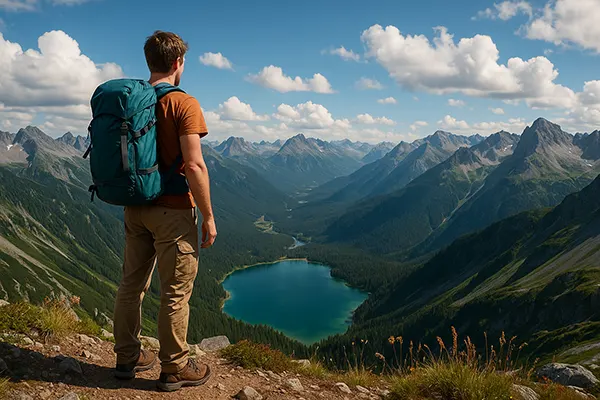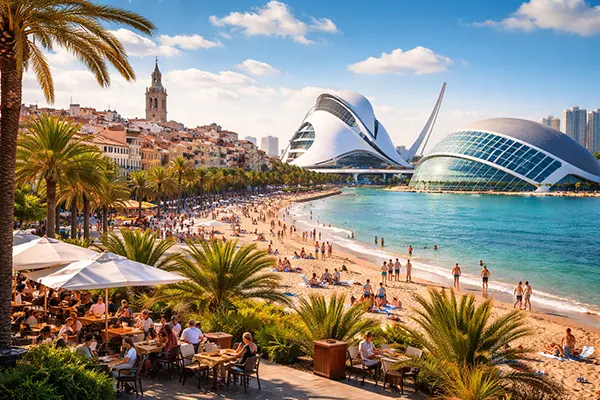
Forest Gump Camping in France — A Woodland Journey by Lakes and Starry Nights
Camping in the French countryside offers an unmatched combination of tranquillity, nature, and cultural richness. Among the most remarkable experiences is the Forest Gump camping route, a scenic adventure that takes travellers deep into the country’s lush woodlands, past shimmering lakes, and into evenings filled with the magic of starlit skies. This journey is not just about staying in a tent; it’s about immersing yourself in the serene rhythm of nature while enjoying the comforts of well-equipped campsites. Whether you are travelling solo, as a couple, or with family, this experience brings you closer to France’s untouched landscapes and the traditions of its rural heartlands.
The Essence of Forest Gump Camping in France
The Forest Gump camping route in France has become a favourite for nature enthusiasts looking for more than just a place to sleep. Stretching through forested regions in areas such as the Dordogne, Vosges, and Auvergne, it offers travellers the chance to explore lesser-known trails, discover hidden lakes, and wake up to the gentle sound of wildlife. Campsites along this journey often provide direct access to hiking paths, canoe rentals, and fishing spots, making it easy to blend relaxation with activity.
One of the key appeals is the diversity of landscapes along the route. You can start in dense conifer forests, move into rolling meadows dotted with wildflowers, and end your day beside a mirror-like lake. This constant shift in scenery keeps each day fresh and exciting, ensuring you never feel like you are retracing your steps. Many visitors choose to follow a multi-day itinerary, staying at different campsites along the way to experience the variety of local settings and hospitality.
Accessibility is another advantage. The route is designed to suit campers of different skill levels, from beginners who prefer facilities like showers and electric hook-ups to seasoned adventurers looking for secluded spots to pitch their tents. This inclusivity makes Forest Gump camping a welcoming choice for all, without compromising on the authenticity of the natural surroundings.
Nature, Wildlife, and Outdoor Activities
Wildlife spotting is a highlight of the Forest Gump route. Depending on the season, you might see deer grazing at dawn, hear woodpeckers in the distance, or catch sight of otters playing near the lakeshores. Birdwatchers will be delighted by the variety of species, from kingfishers to golden orioles, many of which thrive in the protected woodland areas along the journey.
Outdoor activities are abundant, making it easy to stay active throughout your trip. Canoeing across calm lakes, cycling along forest tracks, or following marked hiking trails to scenic viewpoints are all popular choices. For anglers, the lakes and rivers offer the chance to catch pike, perch, and trout, with many campsites offering equipment rentals and fishing permits on site.
Evenings are when the route truly comes alive in a different way. With minimal light pollution, the skies open up to reveal an impressive canopy of stars. Many campsites encourage campfire gatherings, where travellers share stories, cook simple meals, and enjoy the stillness that only the countryside can offer. For many, these quiet, starlit moments become the most cherished memories of the trip.
Best Regions for the Forest Gump Camping Experience
The Dordogne is a standout region for Forest Gump camping, combining dense woodland with medieval villages and winding rivers. Here, you can camp near limestone cliffs, explore prehistoric cave art, and enjoy local delicacies from village markets. The blend of cultural heritage and natural beauty makes this area particularly rewarding for campers.
The Vosges mountains offer a different charm, with cooler air, alpine meadows, and panoramic views from ridge-top trails. Campsites here often have direct access to mountain biking paths and cross-country ski routes in winter, making it a year-round destination. In summer, the lakes in this region are perfect for swimming and paddleboarding.
Auvergne, with its volcanic landscapes and quiet rural villages, offers a wilder, more secluded experience. The region’s lakes, such as Lac Pavin and Lac Chambon, provide picturesque spots for setting up camp and enjoying water-based activities. The slower pace of life here is ideal for travellers who want to truly disconnect from modern distractions and immerse themselves in nature.
Seasonal Highlights and Travel Tips
Spring brings mild weather, blooming wildflowers, and fewer crowds, making it an excellent time for hiking and wildlife observation. Summer is the most popular season, offering warm days ideal for swimming and outdoor dining, though campsites can be busy, so booking in advance is wise. Autumn paints the forests in vibrant reds and golds, adding a unique charm to the journey, while winter camping is possible in certain locations for those equipped for cold-weather conditions.
Travellers should plan their route based on the activities they wish to enjoy. For water sports, aim for areas near larger lakes; for hiking, choose regions with established trail networks. It’s also important to pack appropriately — a combination of lightweight gear for walking and warm clothing for cooler evenings will ensure comfort throughout the trip.
Many campsites along the route offer local produce and freshly baked bread in the mornings, allowing you to enjoy regional flavours without leaving the site. Taking advantage of these options not only supports local communities but also adds a culinary dimension to your camping experience.

Planning Your Forest Gump Camping Trip
When planning your journey, consider starting with a clear route that allows for flexibility. While it’s tempting to fit in as many locations as possible, allowing time for spontaneous stops at scenic viewpoints or unplanned lakeside picnics often leads to the most memorable experiences. Having a map, either digital or paper, is essential, especially in areas where mobile reception can be unreliable.
Choosing the right campsite is key to enjoying the Forest Gump route. Look for facilities that match your comfort needs, whether that’s a simple pitch in a quiet forest clearing or a fully serviced site with showers and electricity. Reading recent reviews can provide up-to-date information on site conditions and available amenities in 2025.
Finally, always follow responsible camping practices. Respect local regulations on campfires, dispose of waste properly, and avoid disturbing wildlife. By leaving no trace, you help preserve these beautiful landscapes for future travellers, ensuring the Forest Gump camping experience remains as magical as it is today.
Essential Gear and Safety Considerations
A well-prepared camping kit should include a reliable tent, sleeping bag suitable for the season, cooking equipment, and a first-aid kit. For those exploring lakes, a lightweight inflatable kayak or paddleboard can enhance your trip and allow access to more secluded areas. Waterproof bags are recommended to protect your belongings during sudden rain showers.
Safety should always be a priority. Inform someone of your planned route and expected return times, particularly if heading into remote areas. Carrying a basic navigation tool, such as a compass or GPS device, can prevent getting lost on less-marked trails. In the hotter months, staying hydrated and protecting yourself from sun exposure is equally important.
Travelling in 2025 means also being aware of regional updates on campsite availability and environmental regulations, which can vary depending on conservation efforts. Checking official tourism websites before departure ensures you have the latest information, making your Forest Gump camping trip smooth, enjoyable, and truly unforgettable.




